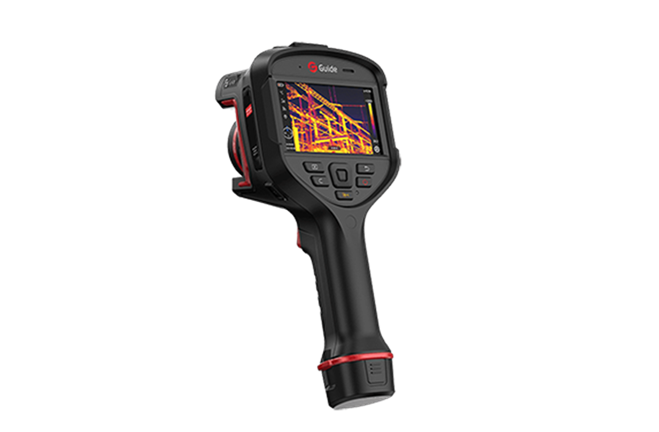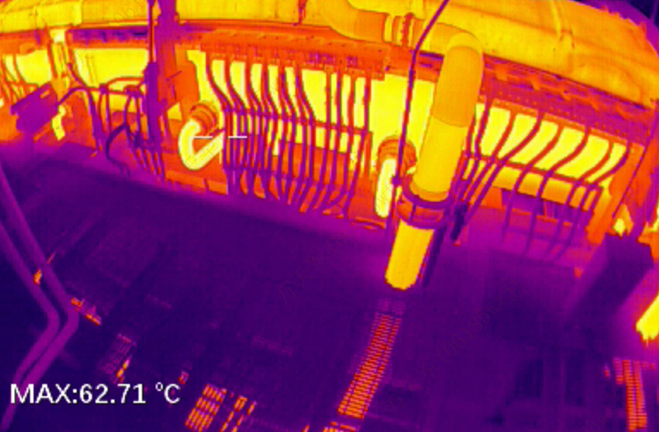Firefighting is an inherently dangerous and high-stress profession. Firefighters face extreme conditions, low visibility, and unpredictable environments. In the midst of smoke, heat, and the chaos of a fire scene, saving lives and ensuring the safety of responders requires quick, informed decision-making. Enter the thermal image camera—a revolutionary tool that is improving firefighting efficiency and safety. Thermal imaging technology has transformed firefighting tactics, enabling faster rescue operations, enhanced situational awareness, and a higher likelihood of saving lives.
Ⅰ. Enhancing Rescue Efficiency
Time is the most crucial factor in rescue operations, and thermal imaging technology plays a vital role in reducing response times. During an emergency, every second counts, and the ability to rapidly identify victims or the source of a fire can mean the difference between life and death.
Locating Victims Faster
One of the most notable uses of thermal imaging in firefighting is its ability to locate victims quickly. In the aftermath of a fire, victims may be unconscious, trapped under debris, or hidden in areas where visibility is minimal. In these situations, thermal cameras can help rescue teams detect body heat from a trapped person even through thick smoke or walls.
For example, during a building fire, smoke can fill entire rooms, making it nearly impossible to see through. But thermal imaging cameras can pinpoint a human body’s heat signature, allowing firefighters to focus their efforts on the right locations, cutting down the time it takes to find and rescue survivors.
This ability to locate victims quickly is not just a time-saver—it’s a lifesaver. When every moment matters, knowing where to look is crucial. A well-placed thermal camera can reduce search times dramatically, improving the chances of rescuing individuals before it’s too late.
Identifying Hot Spots and Fire Spread
Thermal imaging cameras are also used to detect hot spots within a structure. These cameras can identify temperature variations in walls, ceilings, or floors, revealing areas where fire may still be smoldering or where the fire could spread next. This capability helps firefighters quickly address areas that need attention, preventing the fire from spreading and saving valuable time in the process.
By identifying hidden pockets of fire, thermal cameras help fire teams stay a step ahead, allowing them to contain the fire before it grows out of control. This increases the overall safety of both firefighters and the surrounding community, making the firefighting operation more efficient and effective.
Ⅱ. Improving Firefighter Safety
Firefighting is one of the most dangerous professions, with responders constantly at risk of injury or death due to falling debris, structural collapse, and hidden fire dangers. Thermal imaging cameras play a pivotal role in enhancing firefighter safety by allowing them to visualize threats before they become life-threatening.
Navigating Through Dangerous Environments
As firefighters enter a burning building, they face numerous challenges, including poor visibility, dangerous structural integrity, and the constant threat of the fire spreading. Thermal cameras provide critical insight into the environment, helping firefighters navigate through smoke and flames safely.
For example, a thermal imaging camera can help a firefighter detect areas where the temperature is unusually high, signaling potential structural weaknesses, such as weakened floors or walls. By identifying these danger zones early, firefighters can avoid hazardous areas and prioritize their movements to ensure their safety.
Thermal cameras can also be used to monitor the temperature of nearby structures, allowing firefighters to anticipate the spread of fire and plan their actions accordingly. This ability to foresee potential dangers gives firefighters the necessary information to adjust tactics on the fly, enhancing their personal safety and the overall success of the operation.
Reducing Risk of Disorientation
Firefighters, especially in confined or unfamiliar spaces, can easily become disoriented when navigating a smoke-filled building. Without clear sightlines, they may struggle to find their way, which increases the risk of injury. Thermal image cameras alleviate this risk by providing a clear view of the situation, allowing firefighters to orient themselves and stay on track during search and rescue operations.
When a firefighter is lost or unable to see clearly, the thermal camera can guide them back to safety by revealing temperature differentials that point to exits or areas of lower risk.
Ⅲ. Supporting Long-Term Firefighting Strategies
Thermal imaging technology is not only useful during immediate rescue operations but also supports long-term firefighting and fire safety strategies. After the fire has been contained, thermal cameras can assist in assessing the building for remaining hot spots that could reignite the fire. These cameras allow fire teams to confirm that all smoldering embers have been extinguished before leaving the scene, minimizing the risk of re-ignition.
Additionally, thermal imaging can be used during post-fire investigations. By analyzing the thermal signatures left behind, investigators can determine the origin and cause of the fire. This information is invaluable for improving fire prevention efforts and educating the public on fire safety measures.
Ⅳ. Choosing the Right Thermal Imaging Camera for Your Department
As the importance of thermal imaging technology in firefighting becomes more evident, the market for thermal imaging cameras for sale has grown significantly. When looking to purchase a thermal camera, fire departments must carefully assess their needs to ensure they select the best equipment for their team’s requirements.
Key Features to Look For
When purchasing a thermal imaging camera, there are several factors that firefighters should consider. These include:
Resolution: High-resolution cameras provide clearer images, which can be vital for distinguishing between various heat sources in a cluttered environment.
Durability: Firefighters need cameras that can withstand the rigors of firefighting. This includes heat resistance, waterproofing, and the ability to withstand drops.
Battery Life: Firefighting operations can last for extended periods, and a camera with long battery life ensures uninterrupted service.
User-Friendliness: In high-pressure situations, the last thing firefighters want is to struggle with complicated technology. The camera should be easy to operate with minimal training.
Ⅴ. Conclusion
Thermal image cameras are revolutionizing the firefighting profession by providing crucial insights into heat sources, helping firefighters make quicker, more informed decisions. Whether locating victims faster, detecting hidden fire hazards, or improving firefighter safety, thermal imaging technology plays a pivotal role in rescue efficiency. As the technology continues to improve, fire departments must invest in high-quality thermal imaging cameras for sale and work with trusted thermal imaging camera manufacturers to ensure their teams have the best tools for the job. In doing so, they can continue to enhance their firefighting capabilities, improve safety, and ultimately save more lives.













.svg)



_fuben.jpg)

